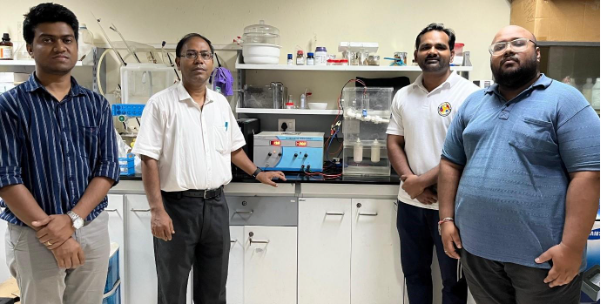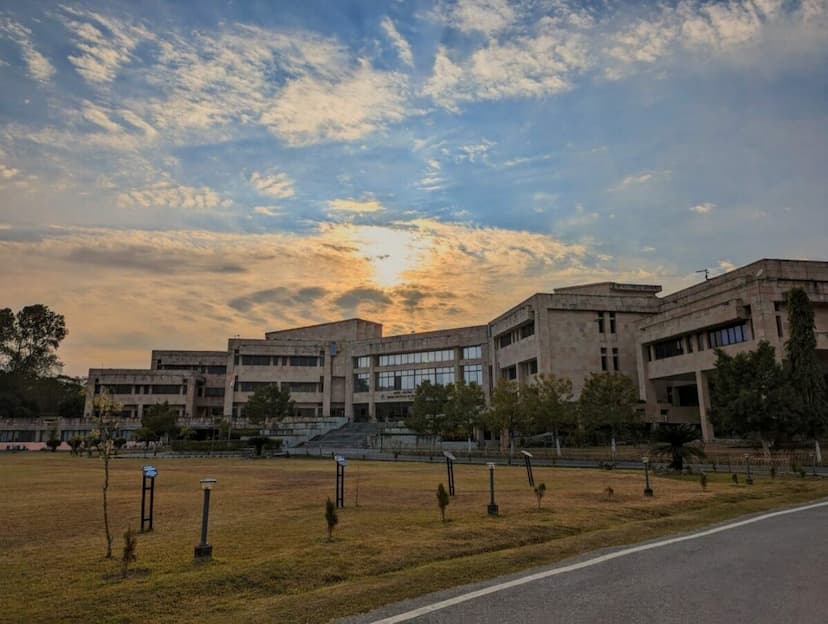IIT Guwahati develops great removal system

IIT Guwahati researchers have developed a community scale water treatment system that removes fluoride and Iron from groundwater.
The efficient system can treat up to 20,000 liters of contaminated water per day, offering a low-cost solution for areas with poor access to safe drinking water.


Fluoride
Fluoride, a mineral generally used in dental care products, pesticides, fertilizers, and some industrial processes, can enter groundwater either naturally or through human activities such as agriculture and manufacturing, say IIT Guwahati researchers.
Consumption of water with excess fluoride presence can lead to skeletal-fluorosis, a serious health condition in which bones harden and joints become stiff, making physical movement difficult and painful.
In India, states including Rajasthan, Telangana, Andhra Pradesh, Karnataka, Haryana, and Gujarat, among others, face high levels of fluoride in groundwater, say sources from IIT Guwahati.

Four step system by IIT Guwahati research team
The IIT Guwahati research team developed a 4-step system that ensures a cost-effective and energy-efficient technology for contaminated water treatment.
In this, the contaminated water goes through the process of –
Ø Aeration – which starts with a specifically designed aerator that adds oxygen to the water, helping remove dissolved iron

Ø Electrocoagulation – the water then moves into the electrocoagulation unit, where a mild electric current passes through aluminum electrodes. This process releases charged metal particles (ions) that attract and bind with contaminants
Ø Flocculation and setting – in this process, the charged ions bound with contaminants form large clumps. These clumps are thickened in the flocculation chamber and allowed to settle
Ø Filtration – after settling of the aggregations, the water passes through a multi-layer filter made of coal, sand, and gravel to remove remaining impurities


In the electrocoagulation process, an electric potential is applied to dissolve a sacrificial metal anode, typically aluminum or iron, generating coagulant species directly in the solution, said Prof Mihir.
‘Simultaneously, hydrogen gas evolves at the cathode.’
These coagulants help aggregate suspended solids and adsorb or precipitate dissolved contaminants, said Prof Mihir of IIT Guwahati.
The hydrogen and oxygen bubbles produced during electrolysis interact with air bubbles, assisting in lifting pollutant particles to the surface, he said.
‘The selection of electrode material depends on factors like low cost, low oxidation potential, and high electro-positivity after dissolution.’
Among available options, aluminum has proven highly effective, particularly in the removal of iron, arsenic, and fluoride under optimal operational conditions, he said.
Key feature of the technology
A key feature of the developed system is its cost effectiveness, with Rs. 20 per 1000 liters of treated water, making it highly affordable.
The developed technology requires minimal supervision and has a projected lifespan of 15 years with electrode replacement scheduled every six months.
The study proposes a method to estimate electrode life using a built-in safety factor to ensure timely maintenance, say IIT Guwahati researchers.
As a pilot project, in support with the Public Health Engineering Department of Assam, the developed technology has been successfully installed by Kakati Engineering Pvt. Ltd. in Changsari, Assam.
Future scope of technology developed by IIT Guwahati team
Speaking about the future scope of this research, Prof. Purkait said they are also exploring the use of solar or wind power to operate the unit and to utilise the hydrogen gas generated during electrocoagulation process.
By integrating smart technologies such as real-time sensors and automated controls, we will be able to further reduce the need for manual intervention, making the system more effective for remote and underserved areas, he said.
Additionally, the research team aims to combine this system with other water treatment methods to enhance its performance and making it a decentralised water treatment solution.

The results have shown removal of 94% iron and 89% fluoride from the wastewater, bringing the levels within safe limits set by Indian standards.
S Vishnu Sharmaa now works with collegechalo.com in the news team. His work involves writing articles related to the education sector in India with a keen focus on higher education issues. Journalism has always been a passion for him. He has more than 10 years of enriching experience with various media organizations like Eenadu, Webdunia, News Today, Infodea. He also has a strong interest in writing about defence and railway related issues.






